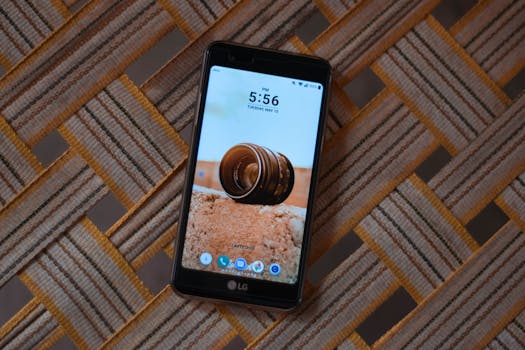Imagine the freedom of hiking to a breathtaking vista and enjoying your favorite movie under a star-studded sky. This is no longer a pipe dream, thanks to the emergence of ultra-lightweight TVs designed specifically for backpacking. These innovative screens, often boasting 15-inch displays and weighing under 5 lbs, are revolutionizing the outdoor entertainment experience. No longer are you limited to small smartphone screens or bulky projectors. These compact, portable televisions offer a perfect blend of portability and visual enjoyment, enhancing your connection with nature without sacrificing comfort. Whether you’re a seasoned backpacker or a weekend warrior, an ultra-lightweight TV can transform your next adventure. From catching the big game miles from civilization to enjoying a family movie night under the open sky, the possibilities are endless. This guide delves into the exciting world of ultra-lightweight TVs, helping you choose the perfect companion for your next outdoor excursion.

Choosing the Right Ultra-Lightweight TV
Power Options and Battery Life
Power is a critical consideration for backpacking electronics. Look for models with multiple power options, including rechargeable batteries, AC adapters, and even solar compatibility. Battery life is paramount, so prioritize TVs that offer extended viewing time on a single charge. Understanding power consumption helps you plan your trip accordingly, ensuring uninterrupted entertainment.
Some models offer power-saving features, allowing you to maximize battery life. Features like adjustable brightness and automatic shut-off timers contribute to efficient power usage. Consider the overall power ecosystem and whether you need to invest in additional power banks or solar panels for longer trips.
Research different battery types and their respective lifespans. Lithium-ion batteries are generally preferred for their lightweight and high energy density. Pay attention to the advertised battery life and user reviews to get a realistic expectation of performance in real-world conditions.
Connectivity and Compatibility
Seamless connectivity is essential for enjoying a variety of content on your ultra-lightweight TV. Look for models with HDMI ports, USB inputs, and wireless connectivity options like Bluetooth and Wi-Fi. This versatility allows you to connect various devices, from streaming sticks to gaming consoles.
Compatibility with different media formats is crucial. Ensure the TV supports popular video and audio formats to avoid compatibility issues in the field. Check for support for digital TV signals if you plan on watching over-the-air broadcasts.
Consider the ease of connecting and managing different devices. Intuitive interfaces and user-friendly menus simplify the process of switching between input sources and adjusting settings. A well-designed interface contributes significantly to the overall user experience.
Durability and Protection
Backpacking electronics need to withstand the rigors of the trail. Look for ultra-lightweight TVs with rugged construction and features like water resistance and dust protection. A durable design ensures your investment can withstand accidental bumps, drops, and exposure to the elements.
Consider the materials used in the construction of the TV. A robust casing and scratch-resistant screen are essential for long-term durability. Reinforced corners and impact-resistant designs provide added protection against accidental damage.
Evaluate the overall build quality and look for features like protective covers or carrying cases. These accessories offer an additional layer of protection during transport and storage. A well-protected TV is less likely to suffer damage during your adventures.
Key Features to Consider
Screen Quality and Resolution
While portability is paramount, image quality shouldn’t be compromised. Look for ultra-lightweight TVs with bright, vibrant displays and decent resolution for a satisfying viewing experience. Consider the screen technology and its suitability for outdoor viewing.
Brightness is especially important for outdoor use. A bright screen ensures visibility even in direct sunlight. Anti-glare coatings can further enhance viewing comfort by minimizing reflections. Consider the screen’s color accuracy and contrast ratio for a more immersive viewing experience.
Evaluate the screen resolution in relation to the screen size. While 4K resolution might not be necessary for a 15-inch screen, a higher resolution generally translates to a sharper image. Consider the viewing distance and choose a resolution that provides adequate detail without excessive pixelation.
Sound Quality and Options
Audio is an integral part of the entertainment experience. Look for ultra-lightweight TVs with built-in speakers that deliver clear and balanced sound. Consider models with headphone jacks or Bluetooth connectivity for private listening.
Evaluate the speaker placement and design. Front-firing speakers generally provide a better listening experience than rear-firing speakers. Consider the speaker power and whether it is sufficient for outdoor use. Some models offer audio enhancements like bass boost or virtual surround sound.
Explore options for connecting external speakers or headphones. Bluetooth connectivity allows for wireless audio streaming, while a headphone jack provides a wired option for private listening. Consider the audio output options and choose a TV that meets your specific needs.
Comparing Popular Models
| Model | Weight | Screen Size | Battery Life |
|---|---|---|---|
| Model A | 4.5 lbs | 15.6″ | 4 hours |
| Model B | 3.8 lbs | 13.3″ | 3 hours |
| Model C | 4.2 lbs | 15″ | 5 hours |
- Consider factors like price, features, and user reviews when making your decision.
- Prioritize features that align with your specific needs and backpacking style.
- Research different brands and models to find the best fit for your budget and requirements.
Conclusion
An ultra-lightweight TV can be a game-changer for backpacking entertainment. By carefully considering factors like weight, screen size, power options, and durability, you can choose the perfect model to enhance your outdoor adventures. These portable screens offer a unique way to enjoy movies, TV shows, and even gaming while immersed in nature. Embrace the future of backpacking entertainment and elevate your next trip with the convenience and enjoyment of an ultra-lightweight TV.

Leave a Reply